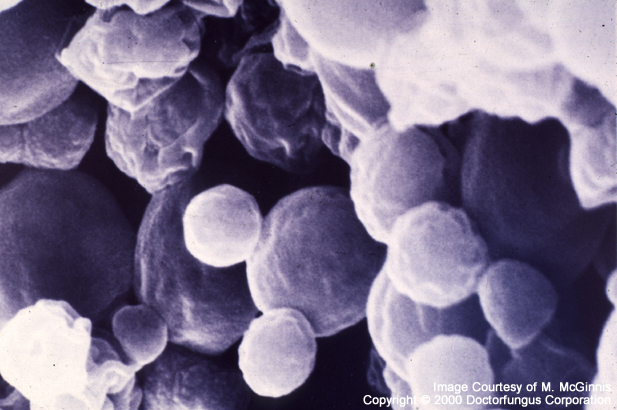(described by de Hoog in 1979)
Taxonomic classification [1496]
Kingdom: Fungi
Division: Fungi Imperfecti
Class: Blastomycetes
Family: Phaeococcomycetaceae
Genus: Phaeococcomyces
Description and Natural Habitats
Phaeococcomyces is a dematiaceous yeast that inhabits the soil and the plant material. The taxonomic position and the nomenclature for the Phaeococcomyces species appear variable in the literature. Due to a problem of nomenclature, the genus Phaeococcomyces has been established as a replacement for Phaeococcus. On the other hand, nutritional physiological data suggest that Phaeococcomyces exophialae is a yeast-like synanamorph of Exophiala spinifera [530, 531, 961].
Species
The two widely accepted species of Phaeococcomyces are Phaeococcomyces exophialae and Phaeococcomyces catenatus. See the list of obsolete names and synonyms for Phaeococcomyces spp.
Pathogenicity and Clinical Significance
Based on a MedLine search, no infections due to Phaeococcomyces have so far been reported.
Macroscopic Features
The colonies of Phaeococcomyces grow slowly. They are slimy, yeast-like to wrinkled, and black in color.
Microscopic Features
Yeast cells produce unicellular, globose to ellipsoidal conidia that are hyaline to dark brown or black. Pseudohyphae may be present. Hyphae are absent.
Laboratory Precautions
No special precautions other than general laboratory precautions are required.
Susceptibility
No data are available.

